|
Experiential learning resources for the innovative educator
Community action projects have become a go-to experiential learning activity in my high school classroom.
I started implementing action projects for a variety of reasons. They get students involved in deep and meaningful learning by acting on community issues that matter to them. They learn because they're invested, and they've invested because they care about the issues. But what is a community action project and what are some ideas for action projects in your classroom, homeschool, or beyond?
My entire teaching career has been at one school, and the experiential philosophy is strongly rooted in "community" as the foundation for learning.
In my ten years teaching at the school I developed a deep appreciation for student involvement in the community, which led to the development of community action projects. Community action projects are a fantastic mix of project-based learning, problem-based learning, and service learning. Students identify issues in the local and global communities important to them, explore solutions, create action plans, and take action. Students have the capacity to make massive waves of change because they are young and technologically savvy, and many injustices happening in the world today are happening to them, impacting them directly, making the issues that much more relevant and important. What learners need from us are the tools, skills, and knowledge to make their voices heard. They have opinions, they have ideas. They just need a nudge, some guidance, and a little confidence. Community action projects give learners those tools. If you're looking for an organized way to manage and facilitate student-led community action projects, grab my experiential learning activities implementation spreadsheet for free, which includes a page specifically dedicated to community action projects.
These projects also teach important social-emotional skills such as empathy and self-reliance. They help students develop essential life and career skills such as collaboration and responsible citizenship.
Most importantly, action projects give students the tools to make a positive impact long after they have completed the project, finished the class, or graduated from school. Ideas for Community Action Projects
A student-led community action project asks that students explore one community issue of interest and then develop an action plan to tackle the issue.
This post offers some ideas for directions students can take with their action plans as well as specific examples of each type of action plan. Let's start by looking at a specific student who is trying to design an action plan. Imagine that your student has identified a community issue either through research, inquiry, and/or direct experience with the issue. From there that student examines the issue and explores solutions that he himself can realistically and tangibly tackle. He has options for ways in which he can take action to personally contribute to solving the problem. This student focuses on an issue in his own community that directly impacts his life. His community is a food desert with low accessibility to cheap and healthy food options. He examines the issue including the history, the source(s), the evolution, etc. He explores solutions and ultimately lands on the following action plan options.
1) Giving Time/Volunteering/Community Service:
Giving time is one way students can be active in the community.
Students can organize a community involvement club, host weekly community clean-up events, organize regular visits to a food shelf, take on a role at a relevant established organization, and so on. Inspire students to identify community issues that matter to them, and to give their time to that cause. Action Plan Example: While examining the details of the issue, the student who recognizes that his community is a food desert comes across a local non-profit organization with the mission of eliminating food deserts in the city. The student discovers that he could partner up with this organization, but it would have to be just that; a partnership. The collaboration would look like this: The student's role would be to coordinate, host, and lead a community gardening project. The student would gather volunteers from the community to build a free food garden for residents using the non-profit's resources, tools, and guidance. The student and non-profit together would coordinate ongoing maintenance of the garden with neighbors as volunteers. The non-profit is critical for this particular action plan option because they have the resources to make it possible. I always encourage students to partner up with local organizations rather than reinvent the wheel. It doesn't mean students CAN'T do an action project completely on their own, but I love the collaboration, networking, and additional learning pieces of working with organizations that are already established. Our students can learn a lot from those who have been at the issue for a long time. It's an incredible learning experience to work under a knowledgeable and experienced mentor.
2) Fundraising:
Students love fundraising! Encourage them to direct that spirit toward a cause that is meaningful or relevant in their lives.
Many people don't have the means to donate money from their own pockets, especially students. They can plan and host a fundraiser for a specific cause and donate money in that way. Action Plan Example: The interesting part about hosting a fundraiser is that students not only need to brainstorm an effective and relevant fundraiser, but also need to determine how the funds raised would best be used, and therefore, where the funds should be donated. One idea that the student tackling the food desert issue has is to write a cookbook filled with healthy, budget-friendly recipes. The book, however, wouldn't include any old recipes. The book would be filled with recipes submitted by neighborhood residents. The student would host a community event at the local library, bookstore, grocer, or another relevant location where he could sell the cookbooks that he and the community have created together. He would also ask those that submitted recipes to make and bring their dishes to the event for attendees to sample. Not only would the student raise money toward the cause, but the student is bringing the local community together to accomplish a shared goal. Ultimately, the student wants to donate the money raised to a local organization that helps put pop-up farmers markets at bus stops.
3) Advocating for Legislation:
Getting involved in legislation is a really important learning experience for students to have in my opinion. In many cases, it is the most effective course of action one could take.
This type of action also teaches students important citizenship concepts, among other things. I had a student who personally contacted her legislator to discuss a bill that would help ex-convicts get jobs, an important and personal issue to this particular student. That legislator came to our school to meet one-on-one with the student to talk about the issue. Action Plan Example: The Minnesota Association of Alternative Programs (MAAP) coordinates an annual "Legislative Day" where students from across the state come to the capital to speak with legislators. This is a powerful way for students to be heard and is one of my favorite learning experiences my students have. One option for the student planning a course of action for the food desert issue in his community is to organize a legislative day for the community or the school. He would gather an interested group of individuals to write letters to and visit legislators to discuss the lack of affordable and healthy food options in the community. The idea would be to get together to brainstorm legislation that could help provide access to healthy and affordable food.
4) Education/Raising Awareness:
Education is one of the most effective courses of action in making long-term change. Say what you will about social media, but in this case, it is a huge ally. Information travels fast, far, and wide when shared on social media platforms.
Students are especially competent with technology. A simple awareness campaign poster posted on social media would reach more people in 5 minutes than a flier would in weeks. Encourage your students to utilize these 21st C. communication skills to their benefit and the benefit of the community. If social media is not an option, understandably, challenge students to spread awareness far and wide without it. Action Project Example: The student (or team of students) focusing on the food desert issue could develop a community education program for the neighborhood. The program would include free in-person and online seminars given by community members about how to grow food, cook healthy meals, budget, and personally advocate for healthy food options in the community. The community members teaching the seminars might include restaurant owners, gardeners, accountants, professors, educators, and more. Seminars might include how to cook a healthy meal, how to grow a vertical food garden, how to grocery shop on a budget, and more. The student could partner with the local library or community center to host an in-person or virtual event.
There are so many ways students can be active agents of change in their own communities. Every project doesn't have to cure world hunger.
What seems like a small and simple gesture may not be small and simple for your student. I had a student who wanted to get a crosswalk put into a high traffic area near the school. Getting a crosswalk put in may not bring world peace, but it was something, and an important something to that student and her community. Students can change the world one project at a time!
Community Action Project Resources for High School Students
Let's work together!
Click the links below to learn more:
Additional Community Action Project Blog Posts
Join our Experiential Education Facebook Group!
Did you know there is an experiential learning Facebook group? Check that out - Experiential Learning Community for K12 Teachers - and join in the discussion about experiential learning ideas such as real world learning in the classroom. Let's Get Social! Follow Experiential Learning Depot on Pinterest, Facebook, Youtube, and Instagram for more on experiential education. Observe. Question. Explore. Share.
0 Comments
Your comment will be posted after it is approved.
Leave a Reply. |
Blog IntentTo provide innovative educational resources for educators, parents, and students, that go beyond lecture and worksheets. AuthorSara Segar, experiential life-science educator and advisor, curriculum writer, and mother of two. Categories
All
|
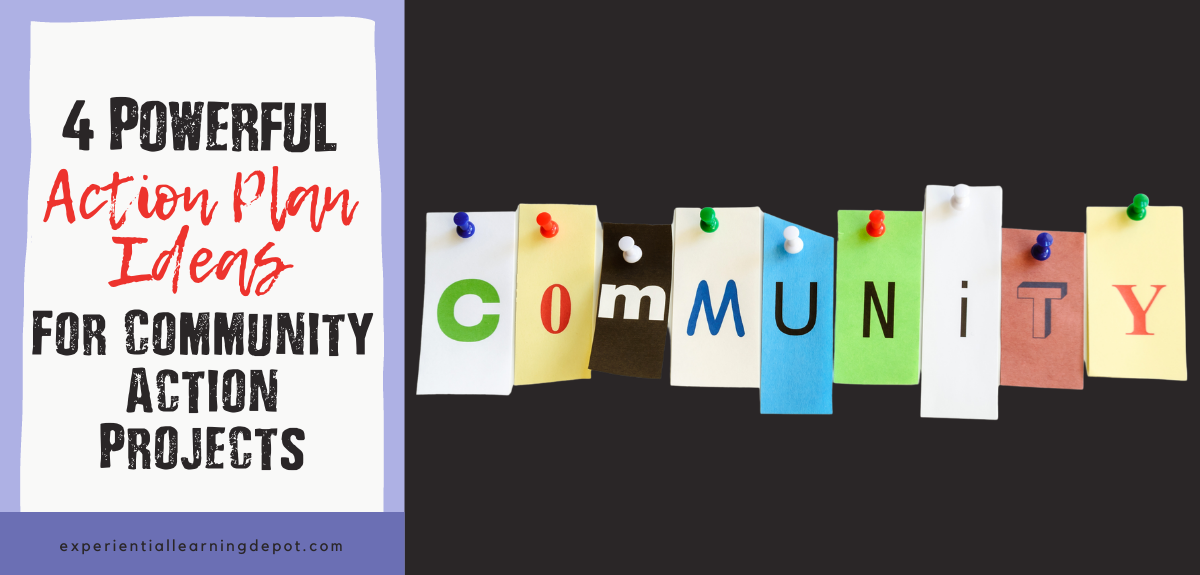
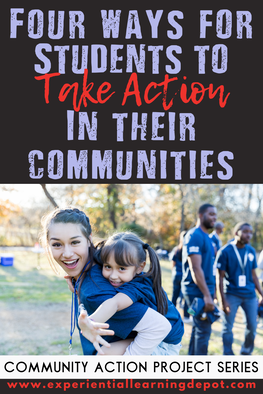
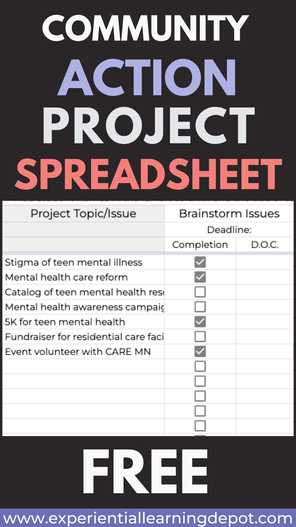
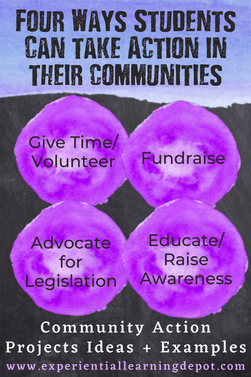
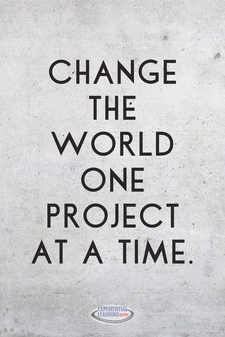
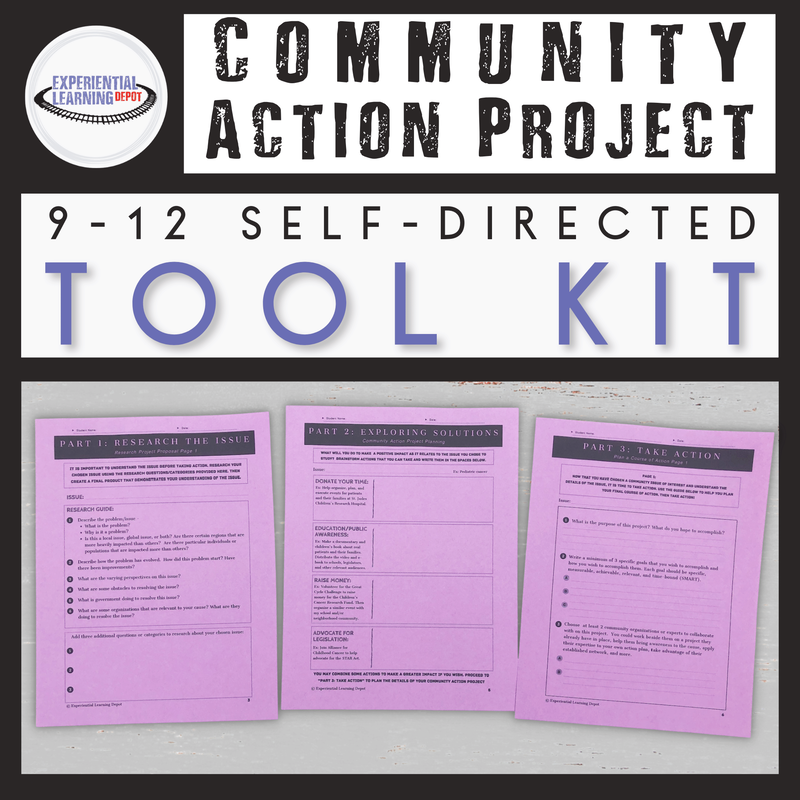
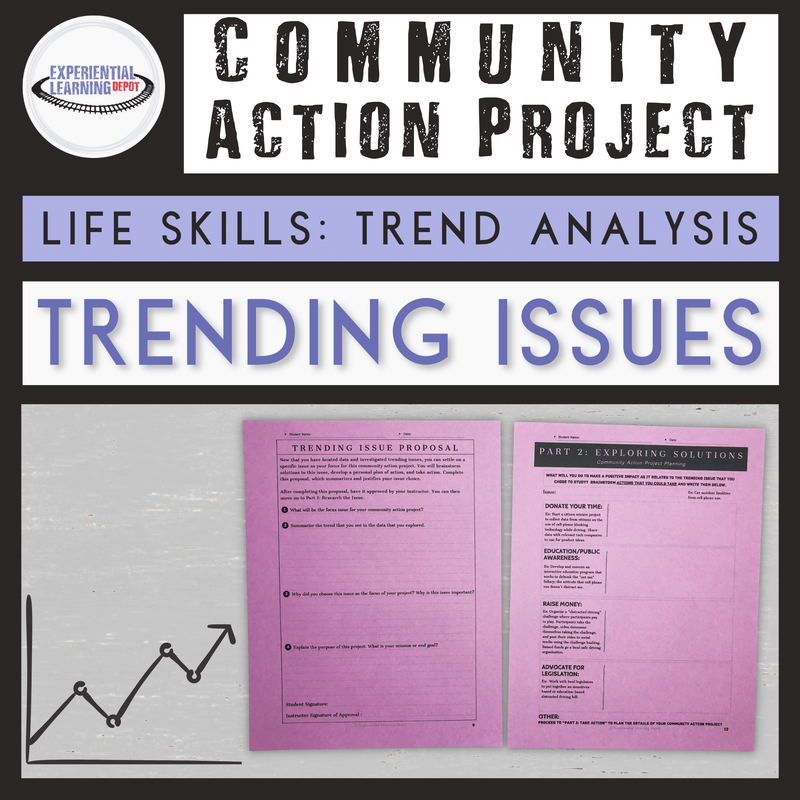
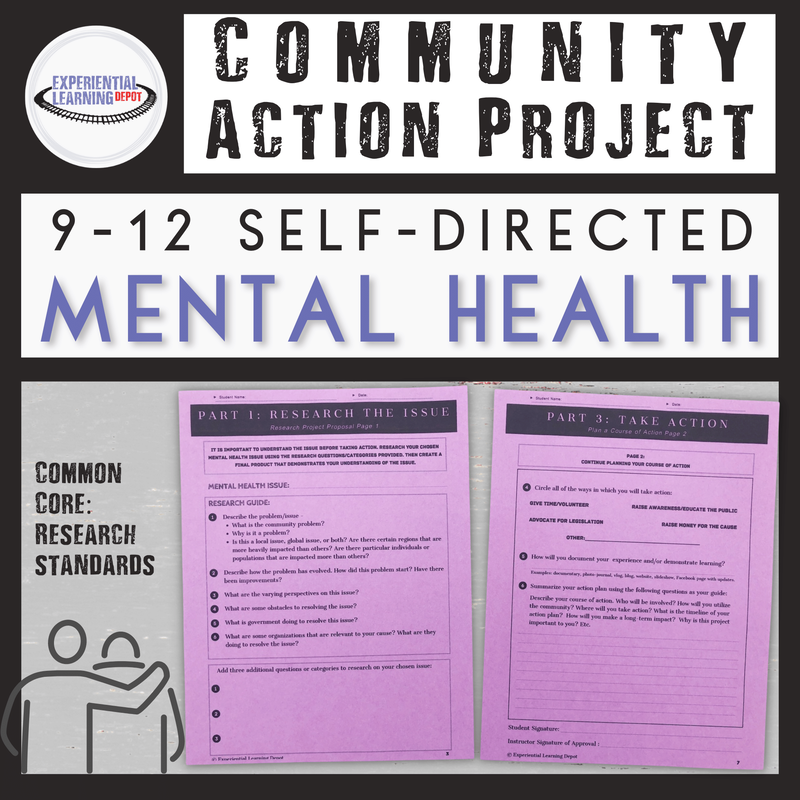

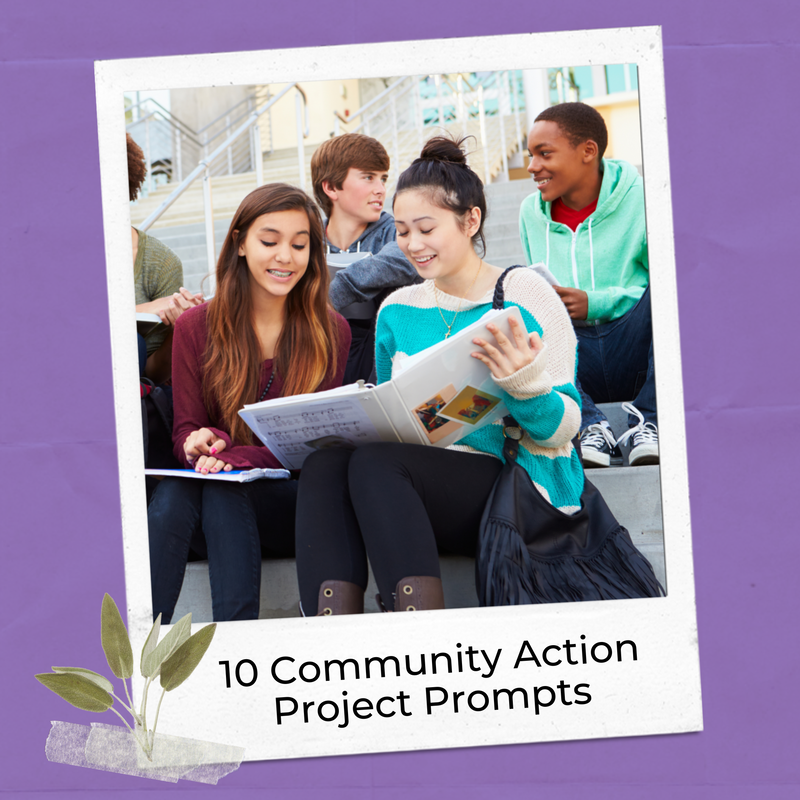
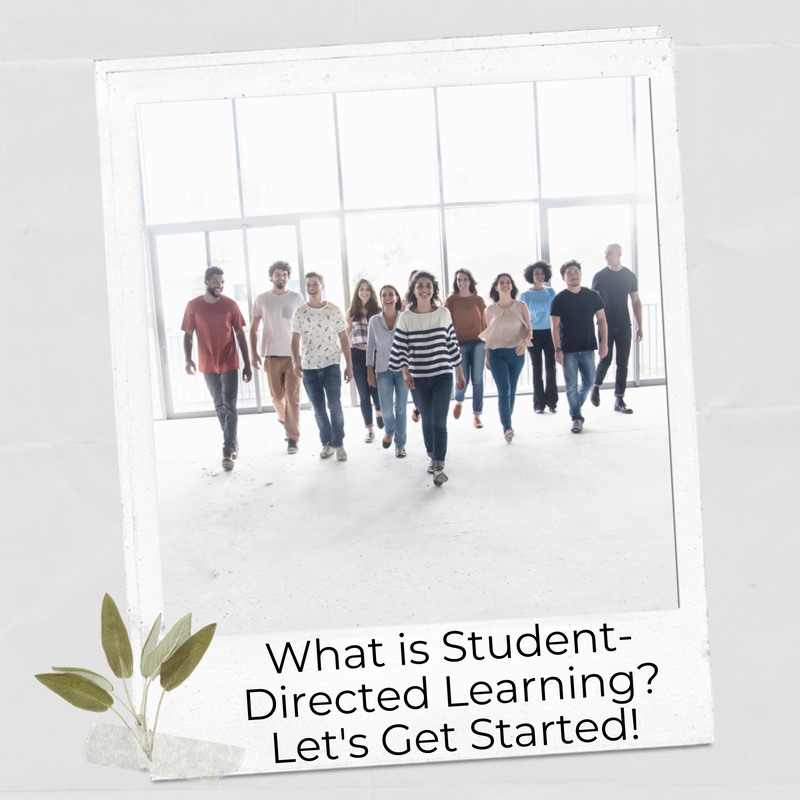


 RSS Feed
RSS Feed